Score breakdown
Things we like
- Lots of grip and pace
- Excellent brakes
- Cabin quality and infotainment are big improvements
- The wagon body style is back!
Not so much
- Exhaust is too quiet. The boxer burble is gone!
- Wagon not as sharp or capable as sedan
- Manual versions don’t get active safety, adaptive chassis or rear air vents
- Sedan lacks rear headroom
UPDATE, May 24: After a time-constrained launch event, Alex Inwood has now had a chance to spend more time with the new 2022 Subaru WRX. We’ve added his full video review to this story now.
The story to here
May 13, 2022: Twenty years ago, if you wanted a fast and affordable performance car with five seats and all-wheel drive, your choice was simple: buy a Subaru WRX or a Mitsubishi Evo.
Fast forward to the present, however, and things have changed. The Evo is no more (that one still stings, doesn’t it?) and the WRX has been swamped by a hoard of hugely capable front- and all-wheel-drive hatches that are quicker, quieter and more comfortable.
Valiantly, Subaru rallied and the WRX’s recipe was refined and improved, but its icon status had started to wane. It felt more like a visceral throwback than the pioneer it once was, and against tech-infused rivals with slicker interiors and ‘Drift Modes’, you got the sense it was half a step behind.
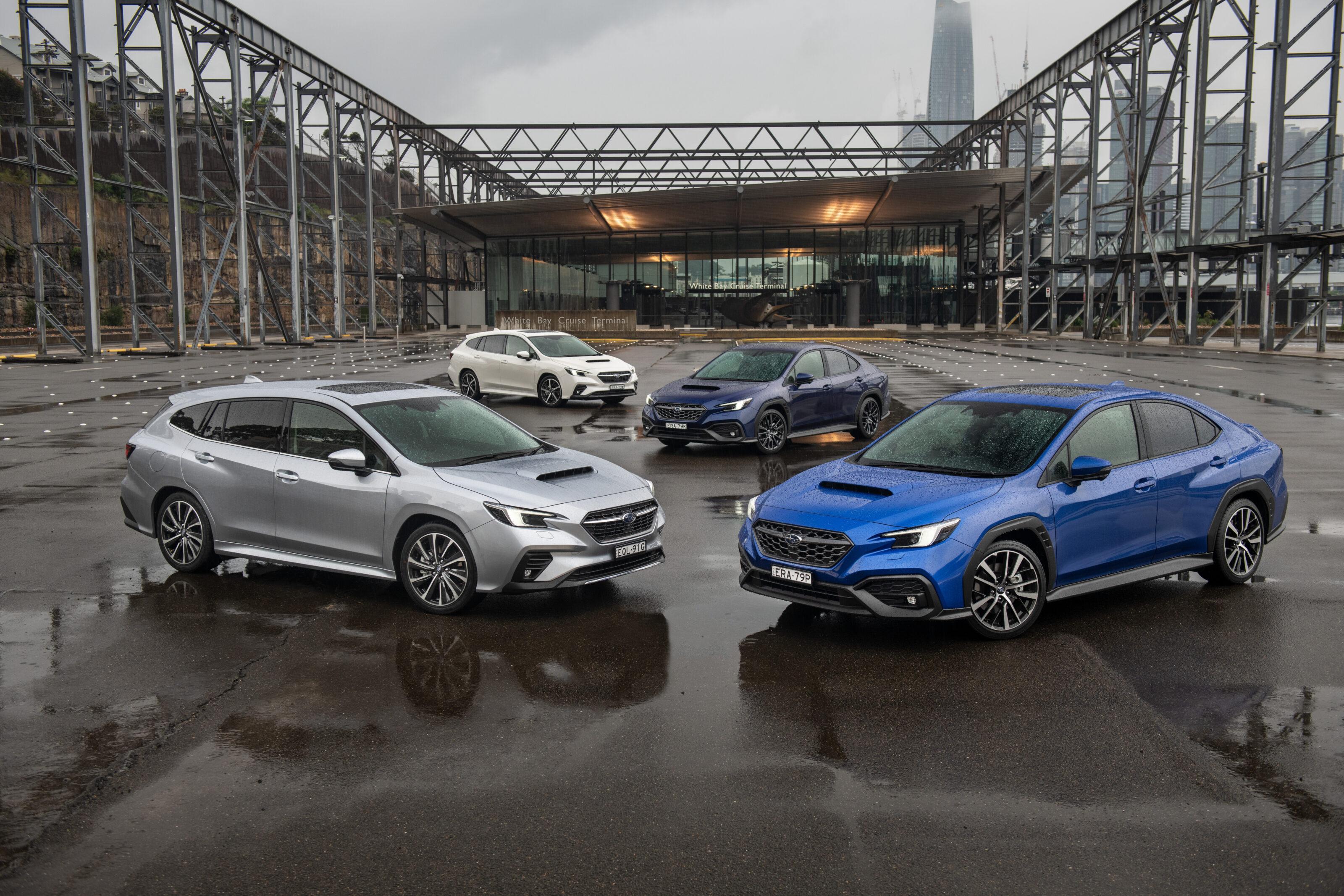
Now, though, we have an all-new Subaru WRX and the headlines are promising. It now rides on Subaru’s stiffer and sharper Subaru Global Platform, the 2.4-litre turbo engine has been overhauled, the cabin is more luxurious and fitted with a large portrait touchscreen and, perhaps most excitingly, buyers once again have the choice of two body styles: a sedan and a wagon.
There’s also a fresh injection of tech with adaptive dampers available on some models and a high level of active safety gear, providing you choose the right variant (more on this later).
The question is, has it worked? Has the WRX once again leapt, sideways, to the top of the affordable performance car segment? Or is it still an old stager for rusted-on Subie fans?
To find out, we drove the WRX range across some of the Victorian high country’s most challenging roads. And the answer, as you’ll soon discover, depends entirely on which WRX you go for…

Pricing and features
The previous WRX might have felt old and rough around the edges, but with a starting price of under $40K, at least it was cheap. This new-gen WRX ups the ante price-wise, with the range now kicking off at $44,990 for the entry-level manual sedan and topping out at $57,990 for the flagship tS Sportwagon. Happily the quality of the cabin and the level of standard equipment have also increased accordingly.
The cabin now feels more upmarket thanks to higher quality materials, well-bolstered sports seats and the inclusion of a large 11.6-inch central touchscreen.
The screen itself is a highlight. Like the new Subaru Outback, it’s arranged in a portrait orientation and the resolution, graphics and functionality are all excellent. It supports wired Apple CarPlay and Android Auto, although many rivals now boast wireless connectivity and wireless phone charging, which the WRX doesn’t offer.
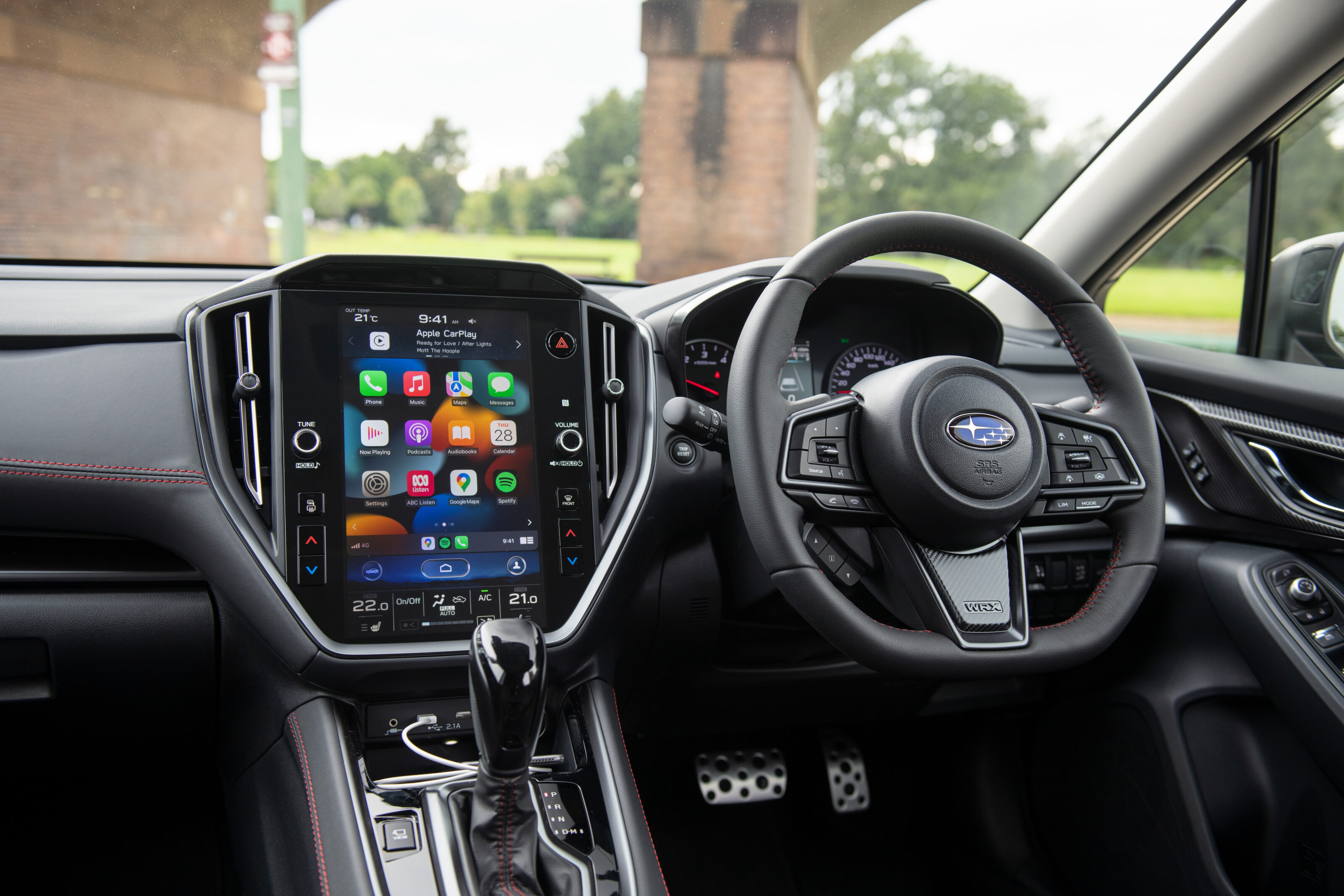
Happily, unlike many of its rivals, Subaru has resisted the urge to bury key functions within the touchscreen’s menu. Even with your phone integrated, the WRX retains a small strip for the HVAC settings and there are physical buttons for the temperature controls.
There are a few minor annoyances, like having to go through a two-step process to change your seat heaters or switch on the air recirculation, but overall the user interface is a WRX strength.
Standard equipment levels are also reasonably generous. Every WRX scores 18-inch wheels, self-levelling and steering-responsive LED headlights, dual-zone climate control, blind-spot monitoring, rear cross-traffic alert and a tyre pressure monitoring system.
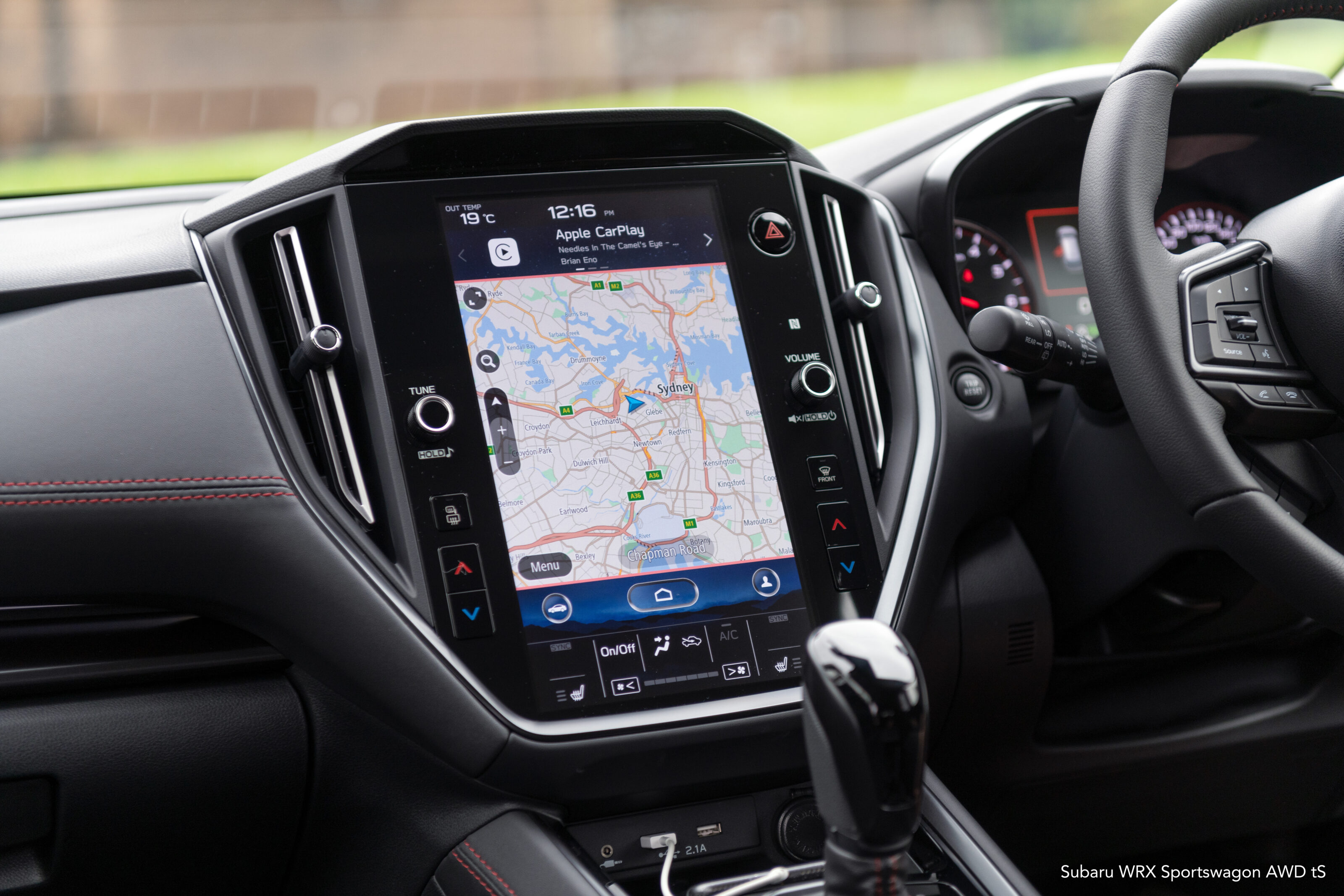
Moving up through the model range adds desirable features like electrically adjustable and heated seats, sat-nav, an electric sunroof and a more powerful Harman Kardon sound system, but there are some notable omissions on some models that need pointing out.
The first concerns safety. Like the Subaru BRZ, manual versions of the WRX are not fitted with Subaru’s EyeSight active safety system that bundles together potentially life-saving tech like Autonomous Emergency Braking, lane-keep assist, lane-departure warning/prevention and adaptive cruise control.
ANCAP is yet to deliver a crash rating for the new WRX and it’s unclear if manual and automatic versions will be given different ratings.
Manual versions also miss out on the desirable adaptive dampers and multiple drive modes that are fitted to top-spec tS variants, which are auto-only. And weirdly, manual cars also lack rear air vents – often a ‘must have’ inclusion for buyers with kids. You also can’t get a WRX wagon with a manual gearbox, which is a shame.
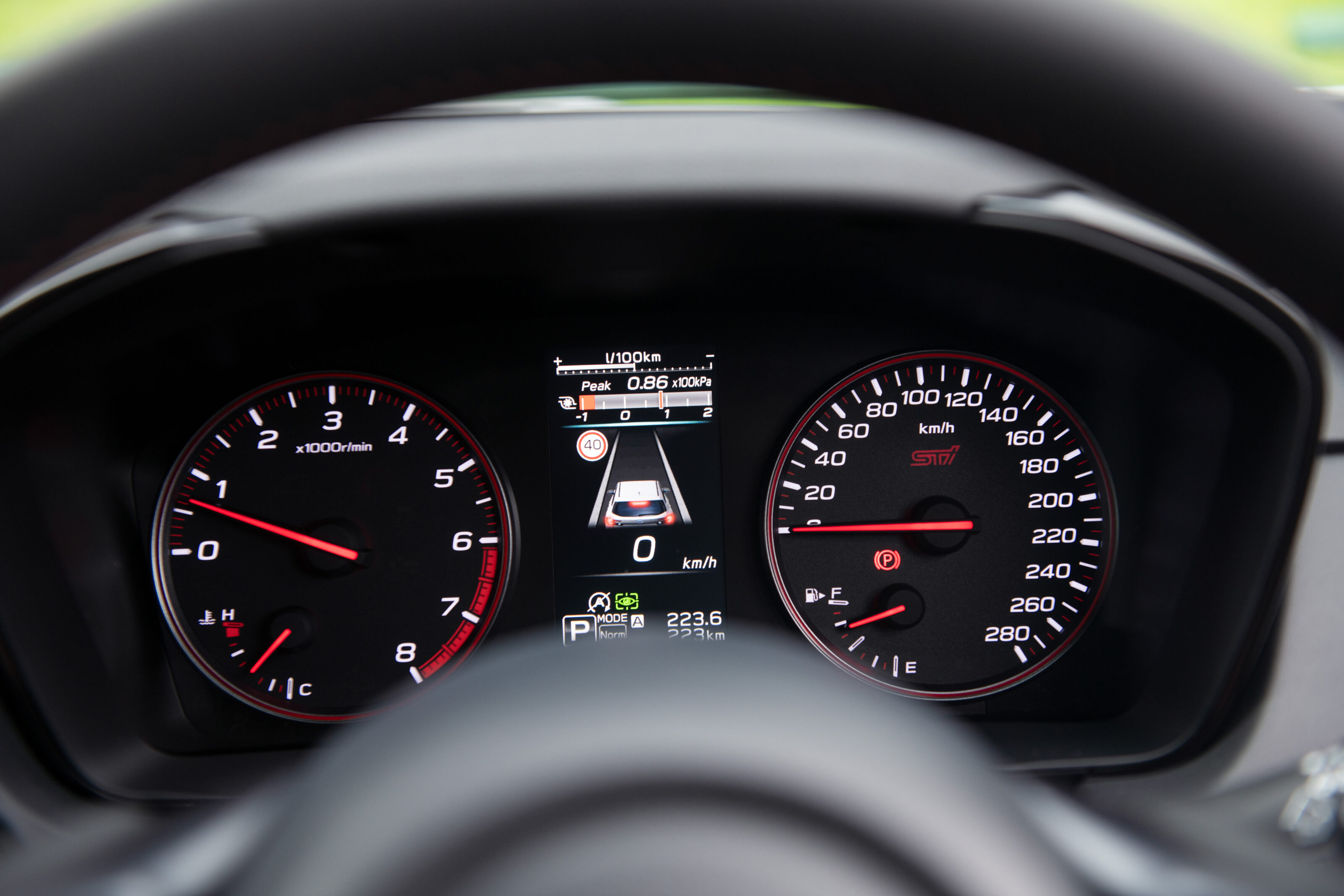
“So what?” you might be thinking, “Just buy the WRX with an auto gearbox”. The problem is many WRX owners prefer a stick shift (Subaru expects 40 percent of buyers to go for the six-speed manual) and as we’ll soon discover, the manual sedan is the pick of the bunch when it comes to driving dynamics if you’re seeking a traditional WRX experience.
Still, specification curiosities aside, the new WRX does represent decent value when compared with key rivals. A Golf GTI, for example, is around $10K more while the Golf R – a more logical rival given it’s also AWD – is up to $20K more depending on spec.
A Hyundai i30 N is roughly the same price as the WRX but is only available in front-wheel drive, and Toyota’s GR Yaris – which is arguably the WRX’s purest rival in terms of its rally-bred philosophy – starts at $50K for the entry level car and $55K for the GR Rallye.

Comfort and space
Comfort and practicality have long been a part of the WRX’s core appeal and that mostly continues with this new generation. Now longer, wider and lower than before, the WRX sedan also rolls on a wheelbase stretched by 25mm. The cabin feels roomy and the driving position is also nicely judged, for the most part at least, thanks to a large amount of reach and tilt adjustment from the steering wheel.
I found myself wishing the driver’s seat went a smidge lower, but at least the pedal placement foibles that plagued manual versions of the old WRX have been addressed. Manual cars now score pedals that are decently placed for some heel-and-toe action.
The front seats are nicely bolstered and comfortable but entry-level versions of the WRX have to make do with manual adjustment and cloth upholstery. Mid-spec variants gain electric adjustment, heating and suede accents, while top-spec tS models sport leather-accented upholstery.
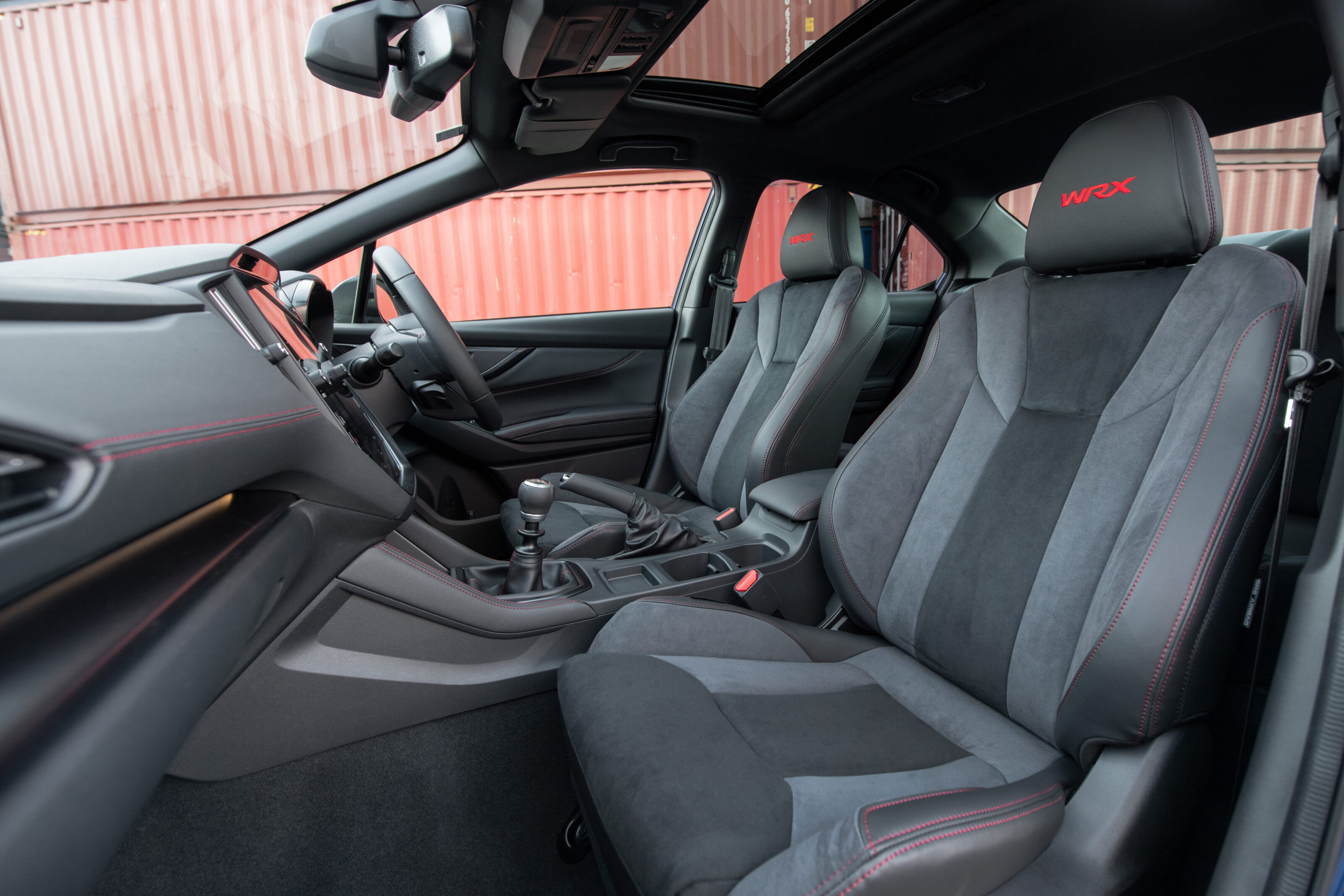
Rear passengers are nicely looked after, too, thanks to a decent amount of knee- and toe-room, twin USB-A ports and a centre arm rest with two cupholders. And automatic versions gain twin rear air vents.
It’s certainly a roomier car than most of its rivals, but fitting three adults across the rear bench might be a tight fit in the WRX. The transmission tunnel is pronounced and the shoulder bolstering is quite aggressive on the outboard seats, which pushes you towards the centre of the car.
A lack of headroom is another concern in the sedan. I’m 6ft-2in and my head brushes the ceiling, which would start to get on my nerves.
It’s a different story in the back of the wagon. Its longer roofline means headroom is excellent for adults in the second row and you also gain a useful bump in load-lugging capability. The 2022 WRX sedan’s boot offers 414 litres of luggage capacity but that grows to 494L in the wagon. The wagon’s boot also scores a light, bag hooks, tie-down points and a retractible luggage blind.
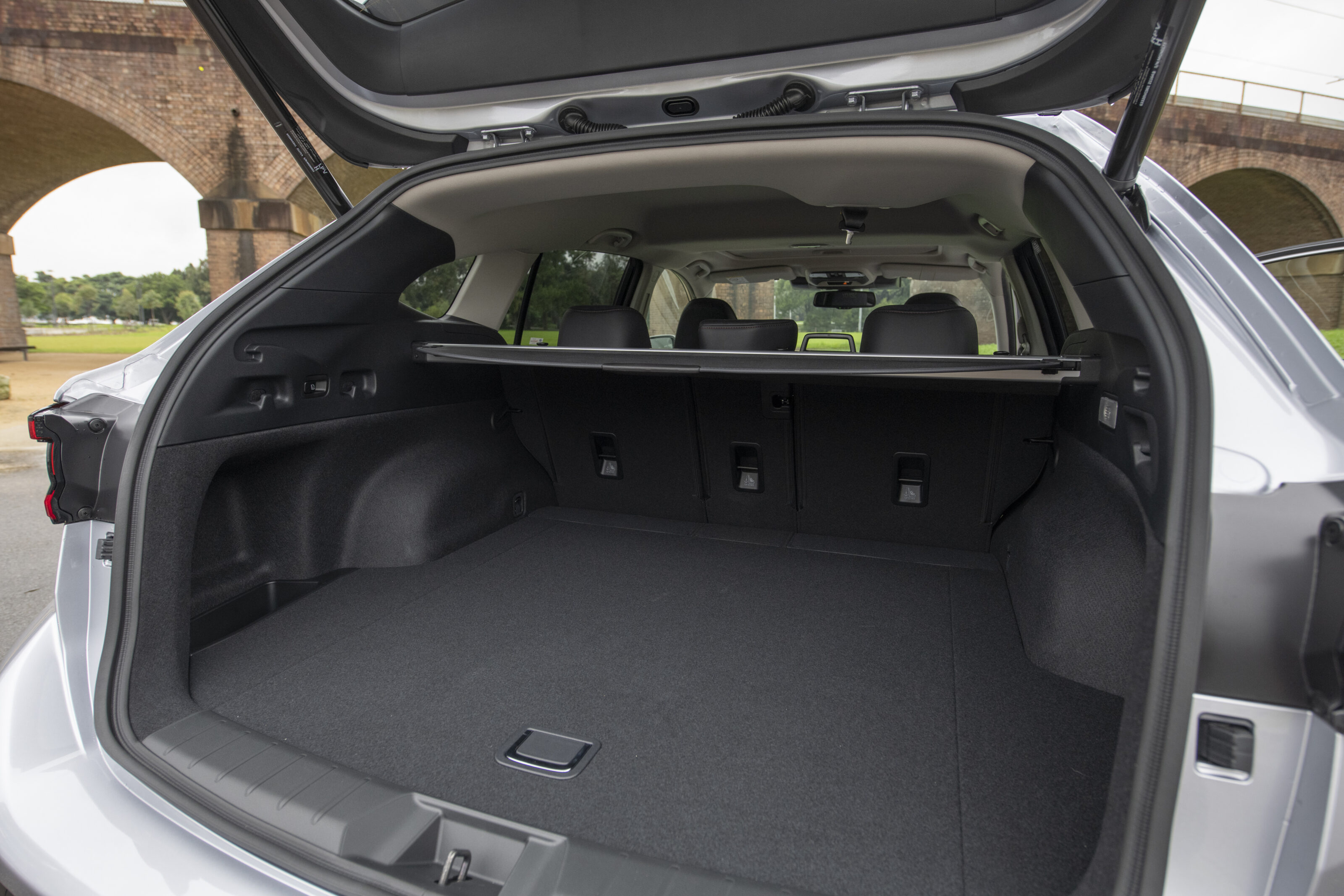
On the road
The Victorian high country is WRX county.
Full of sinuous stretches of tarmac that twist and dive as they snake their way towards Mount Buller, they’re the kind of roads that require grip, composure and confidence to fully exploit what they have on offer. Like I said, WRX country.
What I wasn’t expecting, however, is how different this new WRX feels from variant to variant and body style to body style…
I start in a manual RS sedan and my first impression is one of polish and refinement. The clutch action is light, the steering is quick witted and direct and road noise is mostly relegated to a background hum. But the soundtrack from the engine is concerningly mute.
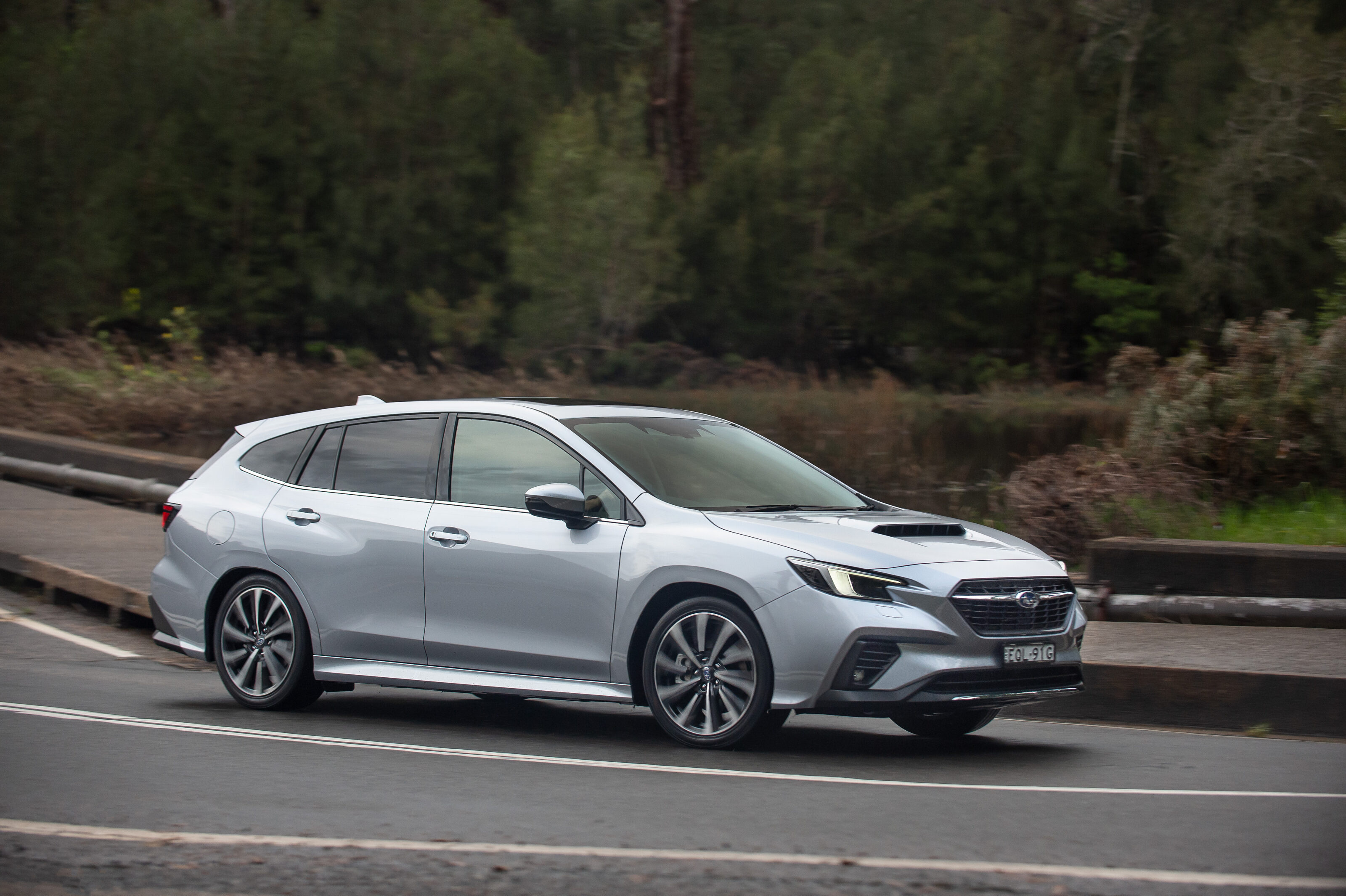
Every version in the new WRX range runs the same 2.4-litre turbocharged four-cylinder donk and while it’s largely the same unit found in the old WRX, Subaru’s boffins have made some significant changes.
There are larger conrods, a different crankshaft, revised valve timing and a new intercooler to go with a reduction in weight. Subaru says the WRX’s engine is now seven percent lighter than before.
Combine all this and the result is a mild boost in power from 197kW to 202kW (torque remains unchanged at 350Nm), but the biggest gain is in how linear the power delivery feels. The 2.4L unit revs cleanly to redline with no discernible tapering of the torque curve so it’s worth wringing out to 6000rpm.
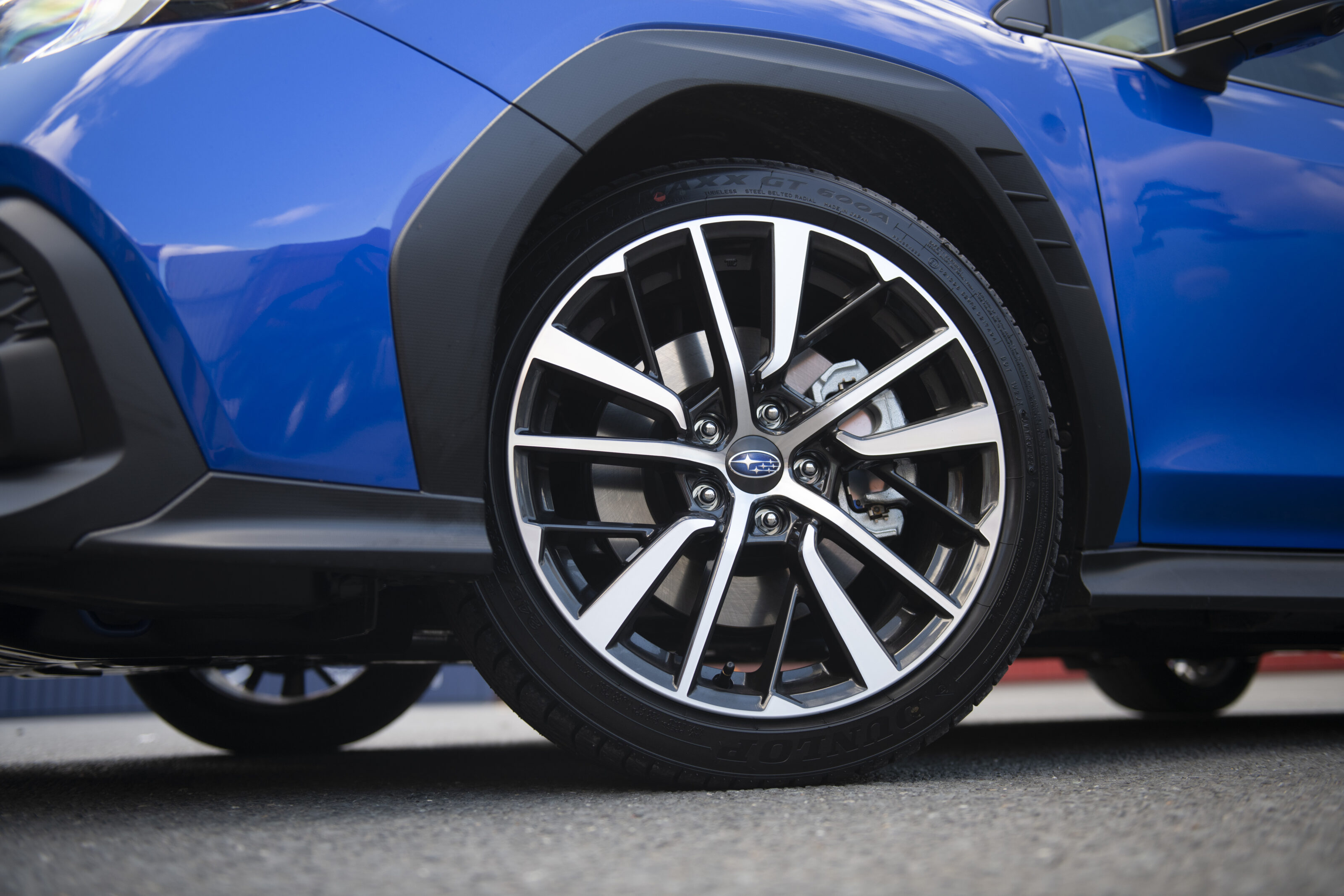
It feels brisk rather than fast (Subaru indicated manual versions should hit 0-100km/h in 6.0 seconds flat, while the auto is around 6.1sec) but at least the soundtrack improves with speed thanks to a very subtle boxer backing track. Mostly, though, it’s whining induction noise that dominates.
At least the chassis feels more traditional WRX. The ride on passive dampers is a touch terse at low speed, but the trade off is excellent body control and stability, even on really choppy surfaces.
Subaru’s Global Platform delivers an improvement in torsional rigidity and centre of gravity, and the new WRX does feel decidedly more eager and stable when driven hard.

The steering, which is quicker than before, is also a highlight. It’s immediate off centre, weighs up progressively as your speed builds and it’s unwaveringingly accurate. Sedan versions run 245/40 R18 Dunlop Sport Maxx GT rubber and the front axle dives into corners with surprising eagerness. Just don’t count on much in the way of playfulness from the rear end. Ultimate grip is the overriding dynamic takeaway.
The brakes are also excellent. Strong and virtually fade free, they offer easy modulation and impressive stopping power. It gives you the confidence to dive deeper and deeper into turns and you can also trail brake heavily into the apex with no fear of unsticking the rear end.
As for the manual shift? It’s okay. The ‘box itself is the same unit as the old WRX but the gears have been machined differently to reduce noise and improve the shift feel. It’s certainly not a weakness, but nor is the gearbox a tactile delight that delivers precise, mechanical-feeling shifts.
Jumping into a tS sedan provides an interesting comparison. tS versions are automatic only and gain adaptive dampers with multiple drive modes. The CVT gearbox is interesting. Subaru calls it a Sport Lineartronic and claims it will transform enthusiasts’ opinions of CVTs which are often derided for being noisy, laggy and delivering a ‘rubber band’ effect where engine and road speeds feel out of sync.
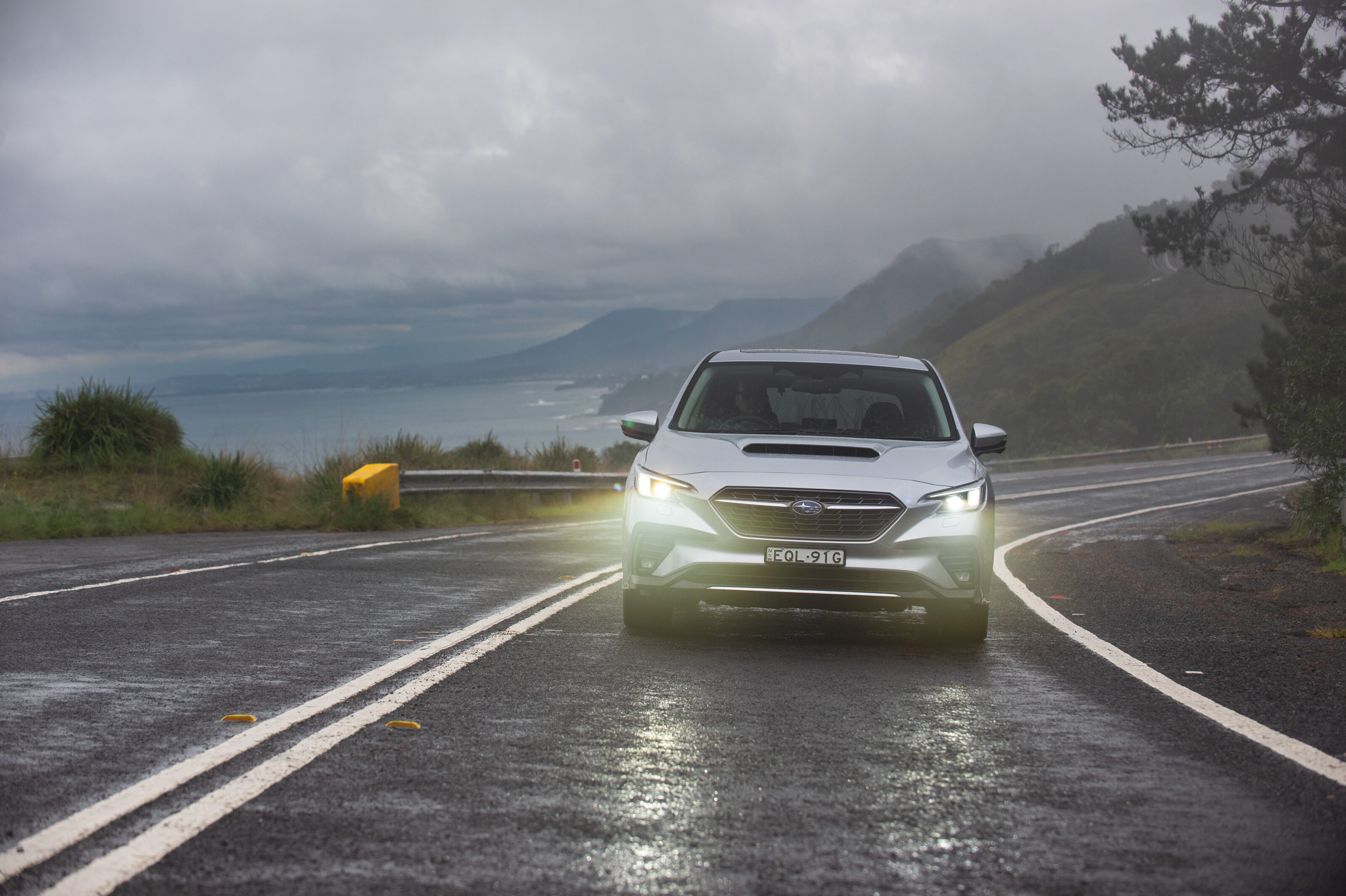
The WRX’s auto ’box offers eight artificially-stepped gears, and it is surprisingly effective. It’s smooth and unobtrusive around town but also encouragingly quick and decisive during hard driving.
Flick the shifter into manual mode and start to play with the shift paddles behind the steering wheel and the CVT does a decent impersonation of a conventional torque-converter automatic. It still slurs slightly between ratios and downshifts are occasionally denied, but it’s easily the best CVT I’ve ever driven.
tS variants also gain three-way adaptive dampers and multiple drive modes and the result is a broader dynamic envelope. Keep the dampers in their Normal setting and the ride quality is similar to cars running the passive dampers, but switch them to Comfort and you gain a pleasing degree of compliance.
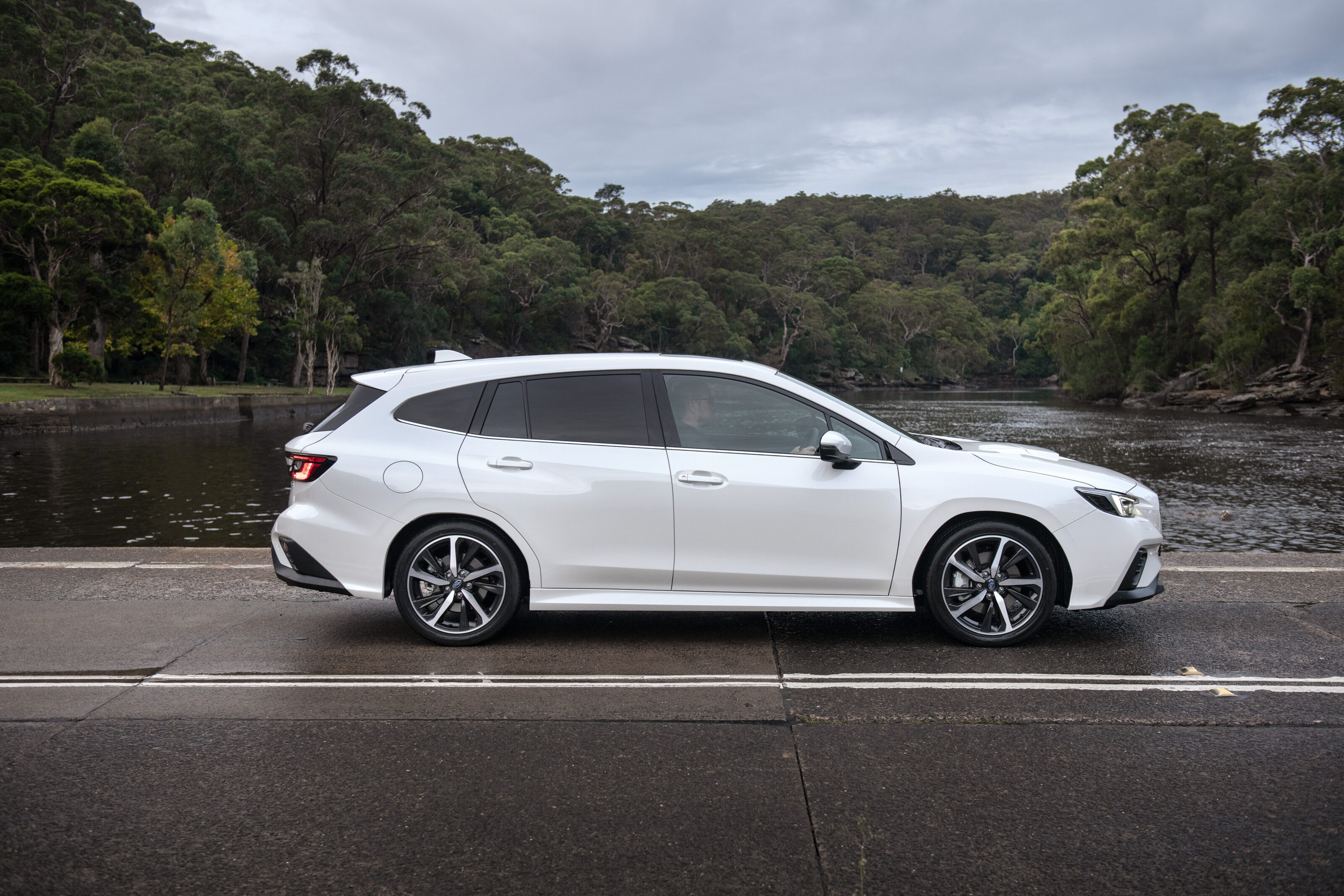
Flicking them the other way into Sport arguably firms things up too much, especially on broken Aussie backroads, but it’s a useful setting for tracking driving.
And happily the WRX also features an individual mode that allows drivers to separate the settings for the powertrain, steering, suspension and all-wheel-drive system. Across the high country’s bumpy, treed-in sections I found keeping the engine in Sport# mode but dialling the steering and dampers back to Normal delivered the best results.
Again, the tS majors on grip and accuracy but unfortunately the sedan’s ability and confidence doesn’t translate to the WRX wagon. In fact, jumping into the entry-level wagon delivers an eye-opening difference. Wagon variants are around 100kg heavier and roll on skinnier 225/45 R18 Yokohama BluEarth GT rubber.
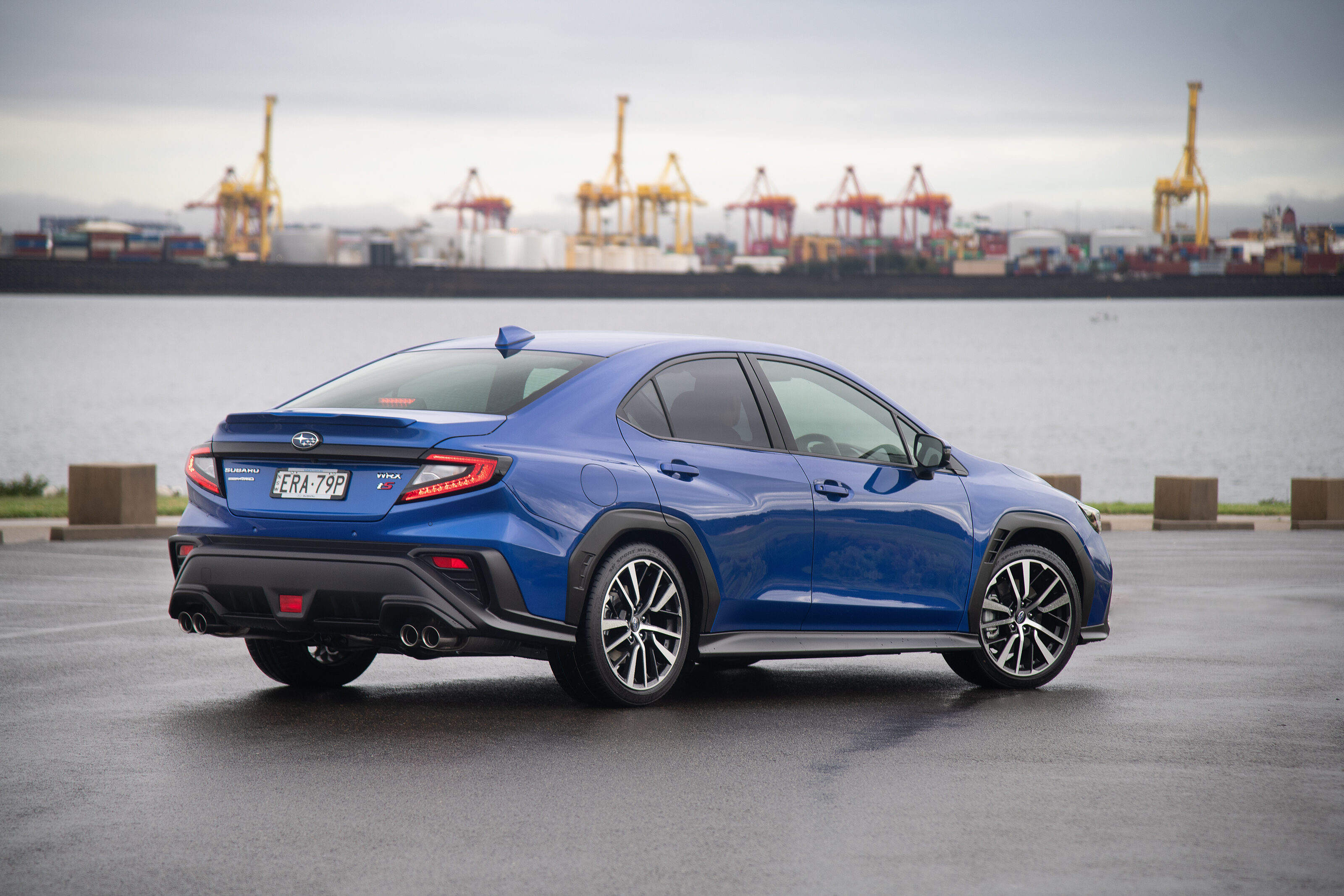
They might sound like minor differences on paper but in the real world, it means the wagon feels like a different car altogether. Gone is the sedan’s assertive front end, with the wagon instead feeling comparably vague and slow-witted. There’s noticeably more body roll, too, courtesy of softer spring and damper rates that give the wagon more of a family focus.
The positive is the wagon’s ride is appreciably more compliant around town, and kudos to Subaru for giving buyers the option of a softer chassis tune, but it also means it’s not as capable or as enjoyable on a twisty road. It struggles to contain its mass through fast changes of direction and the dampers often require a second stroke to get things back under control, which robs your confidence.
Things might be better in wagons equipped with adaptive dampers (we didn’t get to drive one on challenging roads) but if you value sharp dynamics from your sporty wagon, the base WRX Sportwagon is one to avoid.
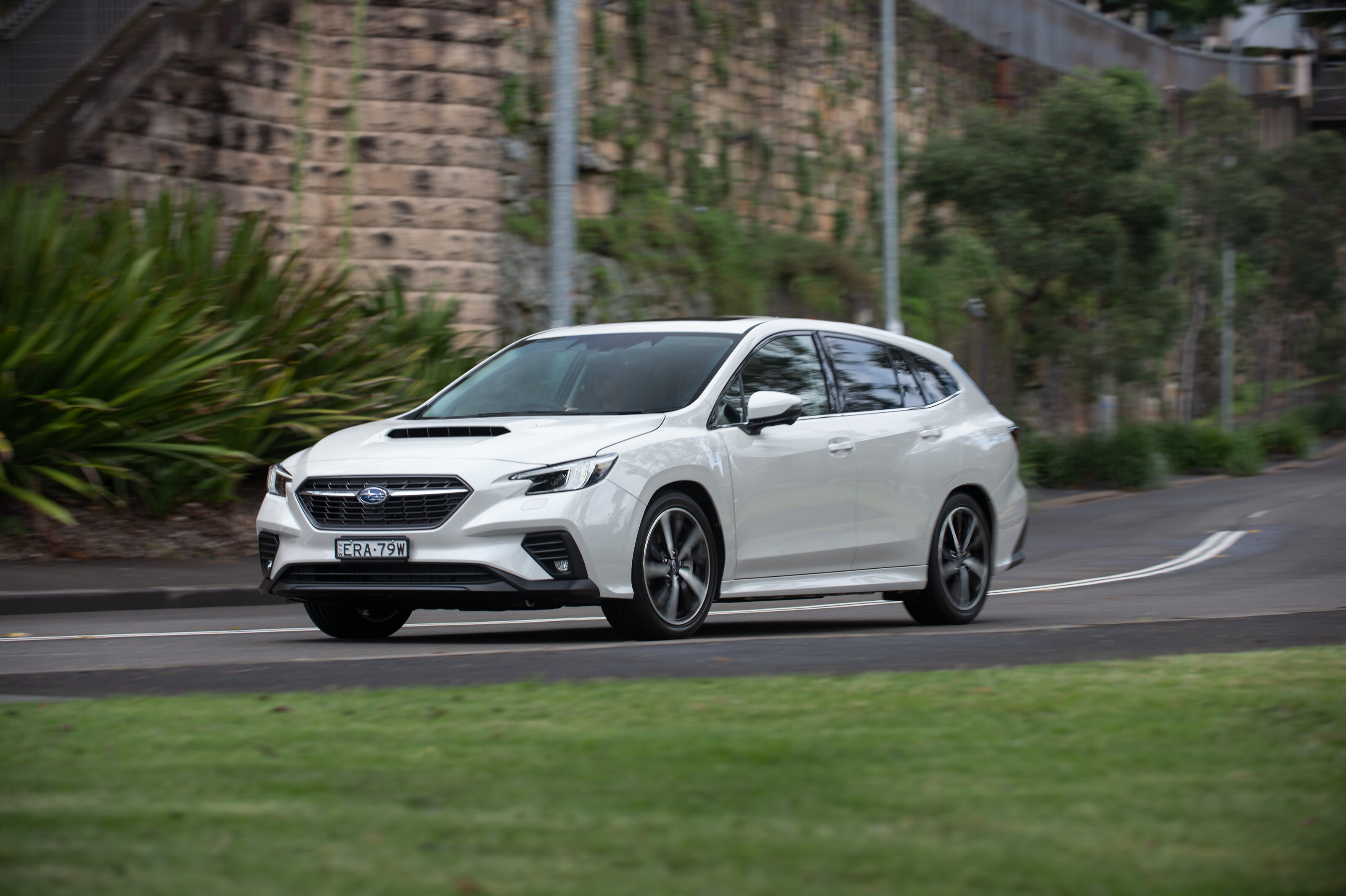
VERDICT
So has the WRX leapt to the front of the ‘bang for your buck’ performance car crowd? Sadly for Subaru, no, it hasn’t. The new WRX is a smarter, quicker and more capable car than the model it replaces but its strange spec anomalies and the dynamic difference between the sedan and wagon mean it makes a few false steps.
And in a segment full of rivals that are more exciting (Hyundai i30 N), more polished (VW Golf GTI) and more capable (Honda Civic Type R), that’s a hard position to bounce back from.
Don’t get me wrong, there’s a lot to like about the new WRX. It’s certainly more polished and mature than any WRX that’s come before it and if you’re looking for a roomy and comfortable daily driver (providing you opt for the adaptive dampers) that also has a sporty side, then this new model will certainly appeal.
But if you’re chasing a performance-forward experience that harks back to the visceral WRX versions of yore, you might be disappointed. Subaru’s rally icon has grown up but, given it now represents the pinnacle of the WRX range as there won’t be a faster or more exciting STI version, it’s also lost a little of its magic.
2022 Subaru WRX specifications
| Body | five door, five seat sedan |
|---|---|
| Drive | all-wheel drive |
| Engine | 2387cc 4cyl boxer, dohc, 16v, turbo |
| Compression | 10.6:1 |
| Power | 202kW @ 5600rpm |
| Torque | 350Nm @ 2000-5200rpm |
| 0-100km/h | 6.0sec (estimated) |
| Transmission | 6-speed manual |
| Weight | 1690kg |
| Fuel consumption | 9.9L/100km |
| Front suspension | Macpherson strut, coil springs, anti-roll bar |
| Rear suspension | double wishbone, coil springs, anti-roll bar |
| L/W/H | 4670/1825/1465mm |
| Wheelbase | 2675mm |
| Brakes | Ventilated discs (front + rear) |
| Tyres | 245/40R18 Dunlop Sport Maxx GT |
| Wheels | 18-inch alloy |
| Price | $44,990 before on-roads |
Score breakdown
Things we like
- Lots of grip and pace
- Excellent brakes
- Cabin quality and infotainment are big improvements
- The wagon body style is back!
Not so much
- Exhaust is too quiet. The boxer burble is gone!
- Wagon not as sharp or capable as sedan
- Manual versions don’t get active safety, adaptive chassis or rear air vents
- Sedan lacks rear headroom
We recommend
-
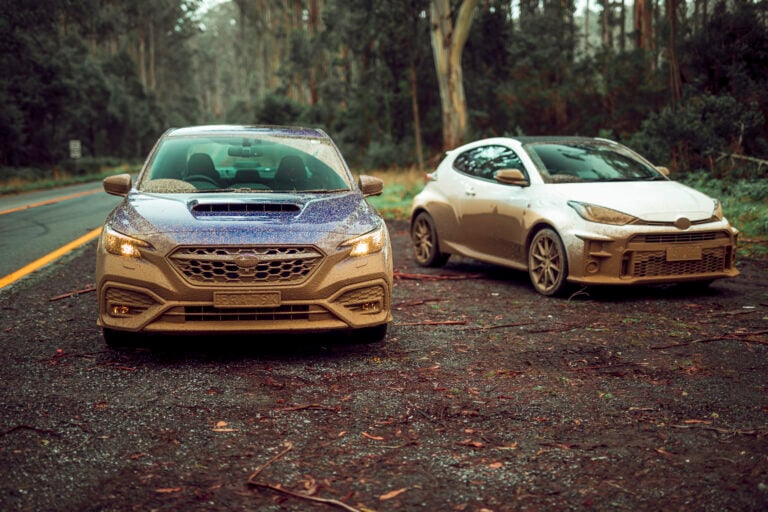 Comparisons
Comparisons2022 Subaru WRX vs Toyota GR Yaris Rallye comparison: Road and gravel!
Subaru’s reborn WRX is quicker, smarter and more luxurious but can it take down Toyota’s WRC inspired GR Rallye? Don your rally clobber, this one’s going to get dirty…
-
 News
News2022 Subaru WRX pricing and features
Pricing and equipment for the new 2022 WRX sedan and wagon have been announced as the vehicle goes on sale in Australia
-
 News
NewsNew car calendar 2026: All the new cars coming to Australia next year
Here’s the WhichCar by Wheels guide to all the new cars that will launch in Australia in 2026. Check back in regularly for updates...






